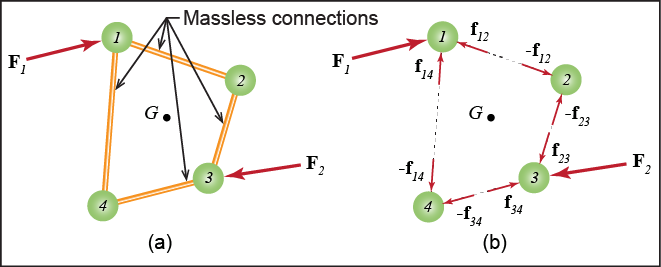Work-Energy for Systems of Particles
Work
The definition of work and the equations used to calculate it don't change when analyzing a system of particles. Depending on whether or not the force is constant with respect to the displacement and what direction the force is applied, one of the following work equations may be used to determine the amount of work performed by a force. Just keep in mind that a system of particles has size and the force(s) may be applied at an offset to the body's center of mass (G). Therefore, each applied force may move through a different distance.
U = ∫F⋅dr
U = F⋅r = Fd cosθ
U = Fd

Kinetic energy
Energies are additive. Therefore, the total kinetic energy of a system of particles is simply the sum of the kinetic energies of the individual particles.
T = ∑(1/2)mivi2
If the system is rigid and it is more convenient to analyze the system of particles as a whole, the following equation may be used. The first term in the kinetic energy equation takes into account the energy of translation and the second term takes into account the energy of rotation.
T = (1/2)mvG2 + (1/2)IGω2
Potential energy
Just as with the kinetic energy, the potential energy is additive.
Vg = ∑mighi
Ve = ∑(1/2)kjxj2
If the system is rigid and analyzed as a whole, then the height used in the gravitational potential energy equation is the height of the system's mass center (G).
Vg = mghG
Work-energy balance
The definition and application of the work-energy balance equation is the same when applied to a system of particles as it is for a single particle.
T1 + V1 + U1-2,non = T2 + V2
